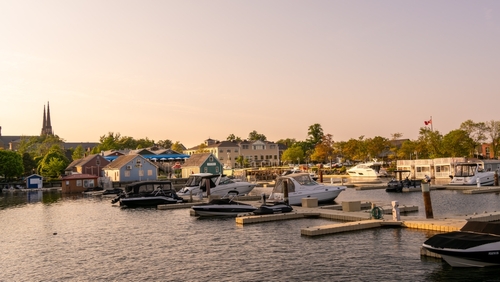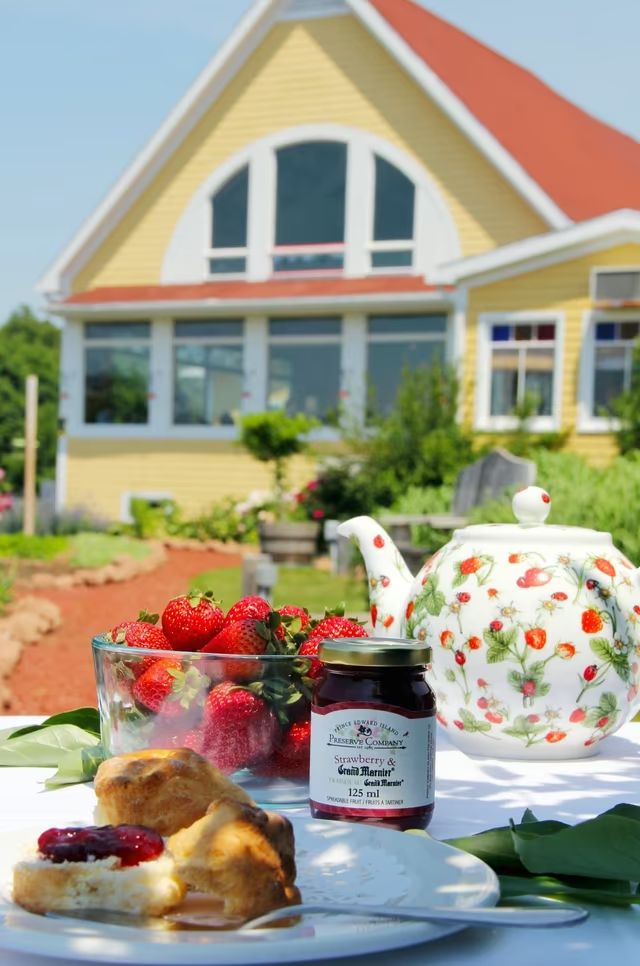My Bookings
Please Enter Your Booking Code To Find Your Booked Tour!

How PEI Became a Major Canadian Tourist Destination
Table of Contents
Tucked away in the Gulf of St. Lawrence, Prince Edward Island may be Canada’s smallest province—but its influence as a tourism destination is anything but minor. With a permanent population just over 170,000, PEI consistently welcomes visitors in numbers that far exceed its own residents each year. From red-sand beaches and storybook villages to lobster feasts and literary landmarks, Prince Edward Island offers a wide range of PEI tourist attractions that captivate travelers seeking beauty, history, and a slower pace of life.
But how did this tiny island evolve into a tourism powerhouse? In this blog, we explore how PEI became one of the major Canadian tourist attractions, tracing its remarkable transformation through centuries of cultural resilience, colonial change, and creative storytelling.
The Island Through Time: Names and Nations
Prince Edward Island’s story begins long before it earned its current name. This land has held many names—each reflecting a different era of cultural identity and transformation.
Epekwitk: The Indigenous Beginning
The Mi’kmaq, the Island’s original inhabitants, have lived here for thousands of years. They called it Epekwitk (pronounced e·be·kwitk), meaning “something lying on the water.” Part of the broader Mi’kma’ki territory, the Island was home to seasonal, kinship-based communities that thrived through hunting, fishing, and gathering. Oral traditions passed through generations preserved their knowledge and culture. Today, Epekwitk remains a living Indigenous homeland, with active communities like Lennox Island and Abegweit First Nation, where visitors can learn about Mi’kmaq culture at the Lennox Island Cultural Centre.
Île Saint-Jean and the Acadian Chapter
In the 1600s, French settlers arrived and named the Island Île Saint-Jean. Many were Acadians who built close ties with the Mi’kmaq and cultivated a thriving society. That changed in 1758, when British forces deported thousands during the Expulsion of the Acadians. Though many were forced into exile, some escaped or returned years later. Their influence remains strong today, especially in Acadian communities and events like the Acadian Festival in Abram Village.
Book now for a private PEI tour with Green Gables and coastal views!
St. John’s Island to Prince Edward Island
After British conquest, the Island became St. John’s Island, attracting settlers, including Black Islanders—some arriving as enslaved people or Loyalists. Despite adversity, they built resilient communities, particularly in Charlottetown and eastern PEI.
In 1799, to distinguish it from other "St. John’s," the colony was renamed Prince Edward Island, honoring Prince Edward, Duke of Kent. Though the name changed, echoes of Epekwitk, Île Saint-Jean, and St. John’s Island remain embedded in the Island’s cultural and historical fabric.
Confederation and the Birth of a Nation
Its historic significance alone makes it one of the most meaningful Canadian places to visit. In 1864, delegates from across British North America gathered in Charlottetown to discuss forming a united country. The meeting took place at Province House, in what is now the historic Confederation Chamber, setting the foundation for Canada’s eventual formation in 1867.Despite hosting this pivotal event, PEI chose not to join Confederation at first, wary of losing autonomy and unconvinced by the economic promises. It wasn’t until 1873, facing mounting debt from building its Island-wide railway, that PEI officially joined Canada—largely to offload those costs to the federal government.
During the 19th century, PEI flourished economically through shipbuilding, exporting wooden tall ships worldwide. Agriculture also boomed, earning the Island the nickname “Garden of the Gulf” for its fertile soil and productive farms. Meanwhile, the Island’s coastal waters supported thriving lobster and fisheries industries, which remain essential to its economy and tourism appeal today.
Tourism Takes Root
 Tourism in Prince Edward Island grew from a powerful blend of literature, landscape, and lifestyle that continues to enchant visitors today.
Tourism in Prince Edward Island grew from a powerful blend of literature, landscape, and lifestyle that continues to enchant visitors today.
The Anne of Green Gables Effect
The global spotlight first shone on PEI in 1908, when author L.M. Montgomery published Anne of Green Gables, a novel inspired by her childhood in Cavendish. The story of the spirited orphan Anne Shirley captured hearts worldwide, and readers soon became travelers—eager to see the landscapes Montgomery described so vividly.
Today, Green Gables Heritage Place is one of the Island’s most visited sites, and Cavendish has transformed into a tourism hub with themed attractions, museums, and performances that celebrate the world of Avonlea. Montgomery’s legacy helped establish PEI as a place of imagination, nostalgia, and charm.Book now for a private PEI tour with Green Gables and coastal views!
St. John’s Island to Prince Edward Island
After British conquest, the Island became St. John’s Island, attracting settlers, including Black Islanders—some arriving as enslaved people or Loyalists. Despite adversity, they built resilient communities, particularly in Charlottetown and eastern PEI.
In 1799, to distinguish it from other "St. John’s," the colony was renamed Prince Edward Island, honoring Prince Edward, Duke of Kent. Though the name changed, echoes of Epekwitk, Île Saint-Jean, and St. John’s Island remain embedded in the Island’s cultural and historical fabric.
Confederation and the Birth of a Nation
Its historic significance alone makes it one of the most meaningful Canadian places to visit. In 1864, delegates from across British North America gathered in Charlottetown to discuss forming a united country. The meeting took place at Province House, in what is now the historic Confederation Chamber, setting the foundation for Canada’s eventual formation in 1867.Despite hosting this pivotal event, PEI chose not to join Confederation at first, wary of losing autonomy and unconvinced by the economic promises. It wasn’t until 1873, facing mounting debt from building its Island-wide railway, that PEI officially joined Canada—largely to offload those costs to the federal government.
During the 19th century, PEI flourished economically through shipbuilding, exporting wooden tall ships worldwide. Agriculture also boomed, earning the Island the nickname “Garden of the Gulf” for its fertile soil and productive farms. Meanwhile, the Island’s coastal waters supported thriving lobster and fisheries industries, which remain essential to its economy and tourism appeal today.
Tourism Takes Root
Tourism in Prince Edward Island grew from a powerful blend of literature, landscape, and lifestyle that continues to enchant visitors today.
The Anne of Green Gables Effect
The global spotlight first shone on PEI in 1908, when author L.M. Montgomery published Anne of Green Gables, a novel inspired by her childhood in Cavendish. The story of the spirited orphan Anne Shirley captured hearts worldwide, and readers soon became travelers—eager to see the landscapes Montgomery described so vividly.
Today, Green Gables Heritage Place is one of the Island’s most visited sites, and Cavendish has transformed into a tourism hub with themed attractions, museums, and performances that celebrate the world of Avonlea. Montgomery’s legacy helped establish PEI as a place of imagination, nostalgia, and charm.Book now to explore PEI’s best, including Green Gables and scenic coastal cliffs!
National Parks and the Scenic Landscape
The Island’s natural beauty added another layer to its appeal. In 1937, Canada created Prince Edward Island National Park—now one of the most scenic Canadian tourist attractions, protecting miles of white and red sand beaches, dune-lined trails, and dramatic coastal cliffs. Stretching along the Island’s North Shore, the park draws nature lovers, families, and photographers in search of Atlantic views and iconic sunsets.
Another transformative development was the Confederation Trail—a 435 km tip-to-tip route created from an abandoned railway line. Open to hikers, cyclists, and snowmobilers depending on the season, the trail allows travelers to experience PEI at a gentle pace, passing through forests, farms, and quaint communities along the way.
The Confident Island Vibe
Beyond attractions, what truly makes PEI unforgettable is its island rhythm. Life moves slower here—marked by roadside farm stands, quiet beaches, and conversations with friendly locals. The contrast to fast-paced urban centers is part of the Island’s charm.
PEI doesn’t just sell scenery; it sells a feeling—one rooted in simplicity, storytelling, and a strong sense of place. Whether it’s through Anne’s world, a home-cooked lobster supper, or a local fiddler at a community hall, the Island’s identity itself has become its greatest tourism asset.
Signature Attractions and Experiences
 Prince Edward Island offers more than just stunning views—it’s packed with unforgettable PEI tourist attractions and experiences that showcase the Island’s charm, creativity, and culture. From literary landmarks to seafood feasts, these signature attractions and experiences have helped shape how PEI became a major Canadian tourist destination.
Prince Edward Island offers more than just stunning views—it’s packed with unforgettable PEI tourist attractions and experiences that showcase the Island’s charm, creativity, and culture. From literary landmarks to seafood feasts, these signature attractions and experiences have helped shape how PEI became a major Canadian tourist destination.
Walk in Anne’s World
No visit to PEI is complete without stepping into the beloved world of Anne of Green Gables. At Green Gables Heritage Place in Cavendish, one of the most iconic Canadian tourist attractions, visitors can explore the farmhouse that inspired L.M. Montgomery’s classic novel, wander “Lover’s Lane,” and soak in the setting that gave life to Anne Shirley’s imagination. Nearby, the Anne of Green Gables Museum offers deeper insight into the author’s life and legacy, nestled beside the Lake of Shining Waters.
Soak Up Summer at Cavendish Beach Music Festival
Held every July, the Cavendish Beach Music Festival draws country music fans from across North America for a multi-day celebration by the sea. With headliners, food trucks, and an electric summer vibe, the festival has become a cultural staple—and a major driver of seasonal tourism in the region.
Catch a Show in Charlottetown
PEI’s capital city comes alive with arts and performance, especially at the Confederation Centre of the Arts. Home to long-running productions like Anne of Green Gables – The Musical, this national arts hub also showcases Canadian theatre, music, and visual art. For a more intimate experience, venues like the Victoria Playhouse bring storytelling to life in coastal village settings.
Book now to discover Charlottetown’s history and charm on a fun, guided walking tour!
Feast Like a Local
Food is an essential part of the PEI experience. Traditional lobster suppers, served with all the trimmings—from fresh rolls to homemade pie—are a beloved ritual across the Island. Culinary travelers also come for PEI potatoes, Malpeque oysters, and world-class seafood chowder, with many local restaurants sourcing straight from land and sea. The Island’s food culture is honest, hearty, and deeply tied to its heritage.
Hit the Island’s Iconic Golf Courses
With nearly 25 courses, PEI is a premier destination for golf lovers. Highlights include The Links at Crowbush Cove, known for its coastal views and challenging fairways, and Mill River Golf Course, offering a picturesque inland experience. The quality and variety make PEI a surprising but well-regarded golf destination.
Explore Unique Island Museums
Quirky, hyper-local, and full of character, these PEI tourist attractions offer something for everyone. The Canadian Potato Museum in O’Leary celebrates the crop that defines the Island’s agricultural identity. The Elmira Railway Museum tells the story of PEI’s transportation past, while the Basin Head Fisheries Museum explores the life and legacy of those who built a living from the sea.
Discover the Soul of Island Villages
The true heart of PEI beats in its small towns and coastal villages. Stroll the art galleries and antique shops of Victoria-by-the-Sea, or step back in time at Orwell Corner Historic Village, where blacksmiths, schoolhouses, and old-fashioned charm offer a glimpse into 19th-century rural life. These communities highlight the Island’s warm spirit, timeless character, and quiet magic.Final Thoughts
It remains one of the most charming Canadian places to visit for those seeking coastal beauty and culture. What makes PEI truly remarkable is not just its red cliffs, pristine beaches, or literary fame—but the seamless way it weaves history, nature, and human warmth into every experience. From ancient Mi’kmaq heritage to the echo of Anne Shirley’s adventures, from a lobster supper shared in a seaside village to the sound of fiddles on a summer night, the Island invites you to slow down, look closer, and feel more.
Its magic lies not only in its destinations, but in its details—the friendly wave from a passing farmer, the honesty box at a roadside potato stand, or a quiet moment on a hidden trail. While Cavendish Cliffs and Charlottetown are undeniably worth visiting, the true soul of PEI reveals itself when you venture beyond the guidebooks.To understand how PEI became a major Canadian tourist destination is to see how deepl

Walking Tour of Charlottetown PEI
2 Hours
A mix of history, sightseeing and laughs await you on this walking tour of Charlottetown.

Charlottetown Food Walking Tour
2 Hours
Eat your way through Charlottetown on our Charlottetown Food Walking Tour

Private Tour of PEI
5 Hours
This exclusive private Prince Edward Island tour includes the famous home of Anne of Green Gables and the area that inspired the famous novel
Related Blogs

Anne of Green Gables' Destinations to Visit on Prince Edward Island - See Sight Tourss
On your tour de Prince Edward Island? Looking for amazing ways to explore this tiny, yet full of wonders island? Here’s one: explore Anne of Green Gables’ world and try to discern the island from Anne’s vision!

Ayesha Munir

Best places to walk in Prince Edward Island
Discover PEI’s best walking trails, from scenic coastal paths to the iconic Island Walk. Explore nature, history, and stunning landscapes on foot!

Ammara Younas

What are the best times of year to go on an Anne of Green Gables tour?
Explore the Best Time to Visit Anne of Green Gables sites and make the most of its charming landscapes, festivals, and outdoor activities. Plan your trip wisely!

Ammara Younas
Related Tours
Quick Links
Book your Tour
Get in Touch
Toll Free
1-888-961-6584
Local
1-289-271-9767
© 2025 See Sight Tours. All Rights Reserved.
1-888-961-6584




